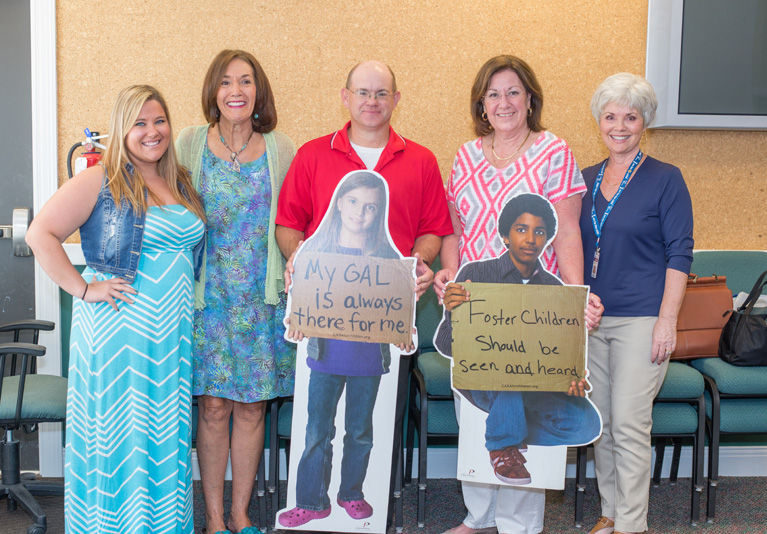
“Children need people in their corner who have no agenda but the child’s welfare,” a trainee once told Vern Melvin, 19th Judicial Circuit Guardian ad Litem Director, when he asked potential child advocates what prompted them to volunteer as a guardian ad litem.
“Because feeling unloved for a child is worse than monsters under the bed,” said another.
To people raised in loving, stable homes, the concept of a child needing someone other than his or her parents to speak for them is almost incomprehensible. The truth is that in far too many cases the monsters under the bed are, in reality, their own family members. And when those monsters rear their ugly heads, someone else must look out for their best interests.
“I am for the Child” is the mandate of the 35-year old program – advocating on behalf of the abused, abandoned, neglected or otherwise vulnerable children who are under the supervision of the Department of Children and Family. GALs are the voice of the child at court proceedings in Florida’s 20 judicial circuits, representing the child’s interests in such decisions as placement, visitation, the termination of parental rights and adoption.
Primary GAL duties include visiting with a child in the home environment and observing the situation, identifying and facilitating resources and services for the child, advocating on the child’s behalf at court hearings and agencies, and monitoring whether court orders are being carried out.
“We know through research that for a child to be successful there has to be at least one caring adult in his or her life. Hopefully there will be more, but there has to be at least that one,” said Melvin to volunteers at a recent training session.
“At the very least, that’s what we do. We’re that caring adult who wants to represent the best interests of those children; to be a voice for them at a difficult time in their life. There’s a lot of confusion going on in their lives. Even when we have to remove them from an abusive situation, human nature seems to be that they want to stay with what’s familiar, even though it’s harmful to them.”
Ashley Garrison, now married with a 5-year old child of her own, knows first-hand the remedial influence of a guardian ad litem. A child of the foster care system, she received nurturing support from the two who advocated on her behalf from age 8 to 18, when she aged out of the system.
“They made such a huge positive impact on my life that I always knew I wanted to do something like them. They were like my voice whenever I needed someone to speak for me,” said Garrison.
Garrison was 12 when she was removed from a dysfunctional family situation and put into a group home, eventually cycling through five foster homes between the ages of 14 and 18. She was fortunate with the last one, at age 16, to finally find a loving, compassionate foster family. In October Garrison became a GAL, assigned a case with two little children, ages 4 and 7, living in a group home.
“The best part is giving a child hope; watching them light up. When you’re in a situation like that you don’t always have a lot that you’re looking forward to in the future. So when you have people that come into your life as a support system, they give you this hope that there’s a better future. You have something to look forward to. You have someone you can lean on that’s not necessarily going to go away,” Garrison explained.
“A lot of times with these children their parents aren’t around. They’re in and out of their lives and there’s not a whole lot of consistency. But with us you get consistency. We’re there when we say we’re going to be there. We’re their voice; we make sure their needs are met. I think that helps them a lot. You see a lot of the hurt from things that are going on in their lives and the confusion. It’s crazy the kind of positive impact you can have on a child just by being there for a couple of hours a month.”
Thirty hours of certification training and 12-hours annually of re-certification training are required to become and remain a guardian ad litem. Depending on the case most spend an average of 10 to 15 hours a month working on their assigned case. No specific educational background is required – the diverse group at the training session included careers in teaching, medicine, law enforcement, retirees and even a prize fighter.
Her advice to anyone considering becoming a guardian ad litem is unequivocal.
“If you’re thinking about doing it – do it. If you have the time that you can put into being a child’s guardian ad litem, do it. Because you have the opportunity to dramatically change a child’s life. You can change the path of a child’s life.”
For more information visit www.GuardianadLitem.org or phone 772-871-7225.



